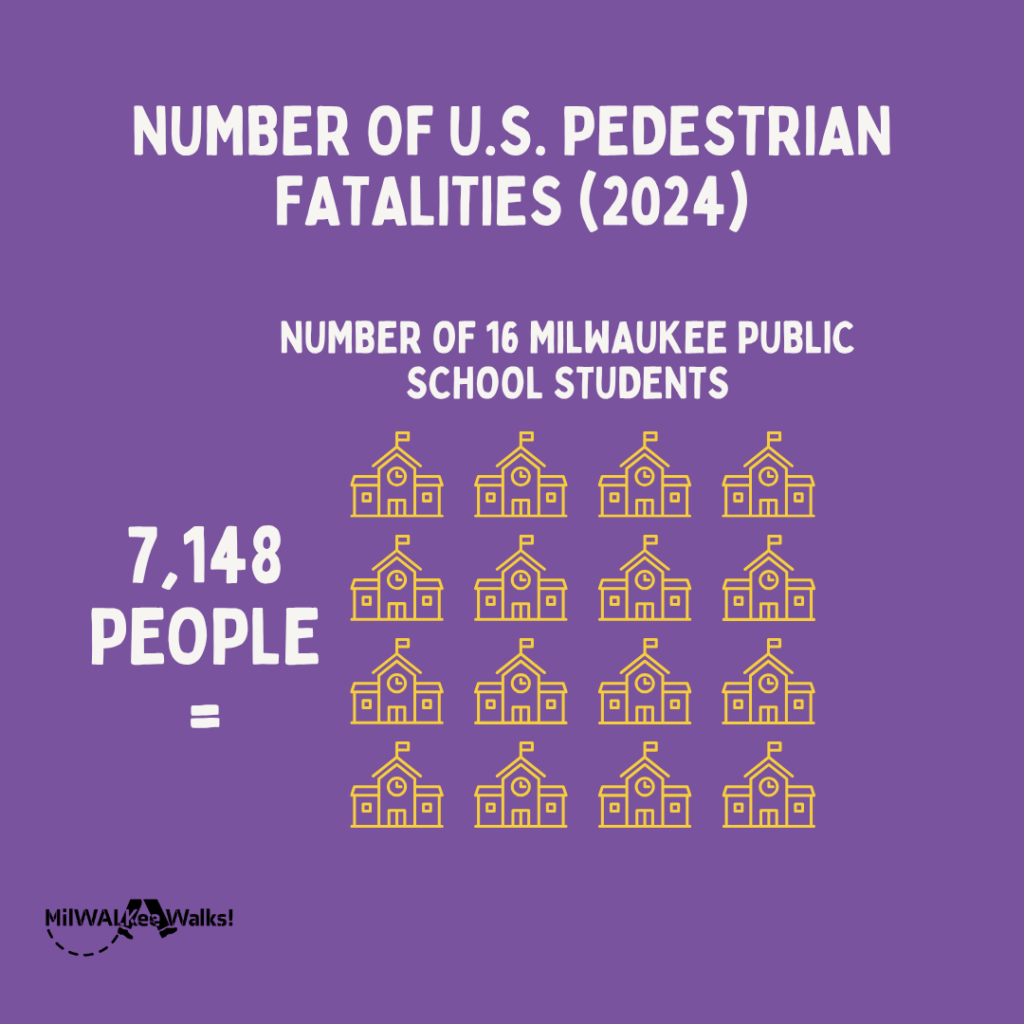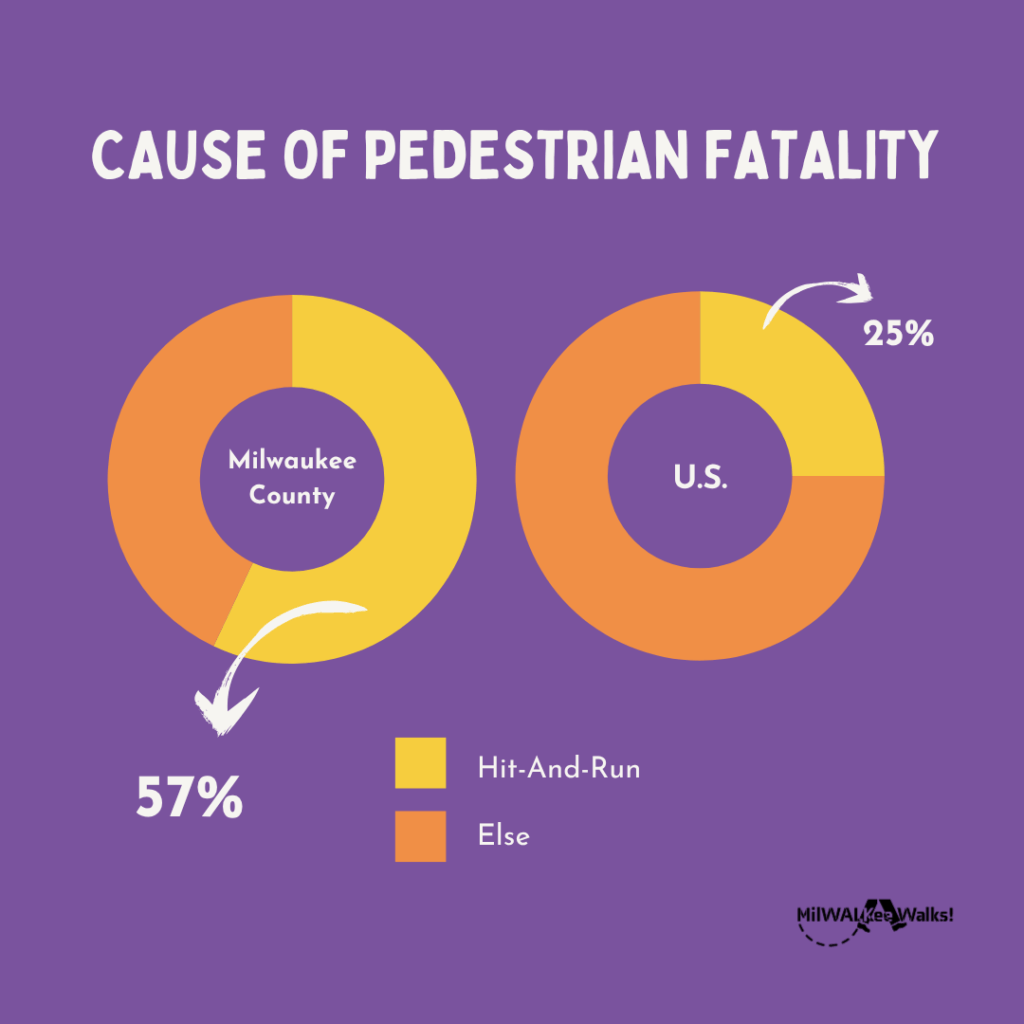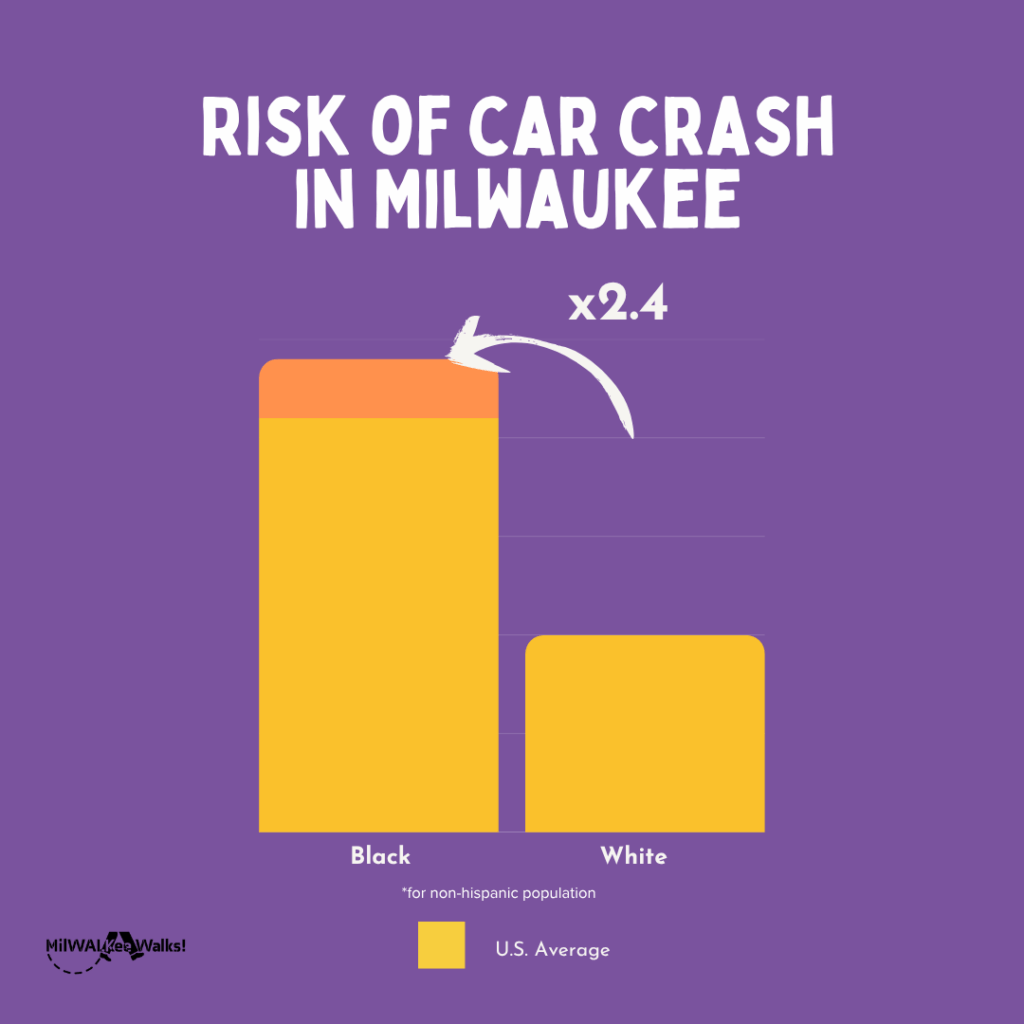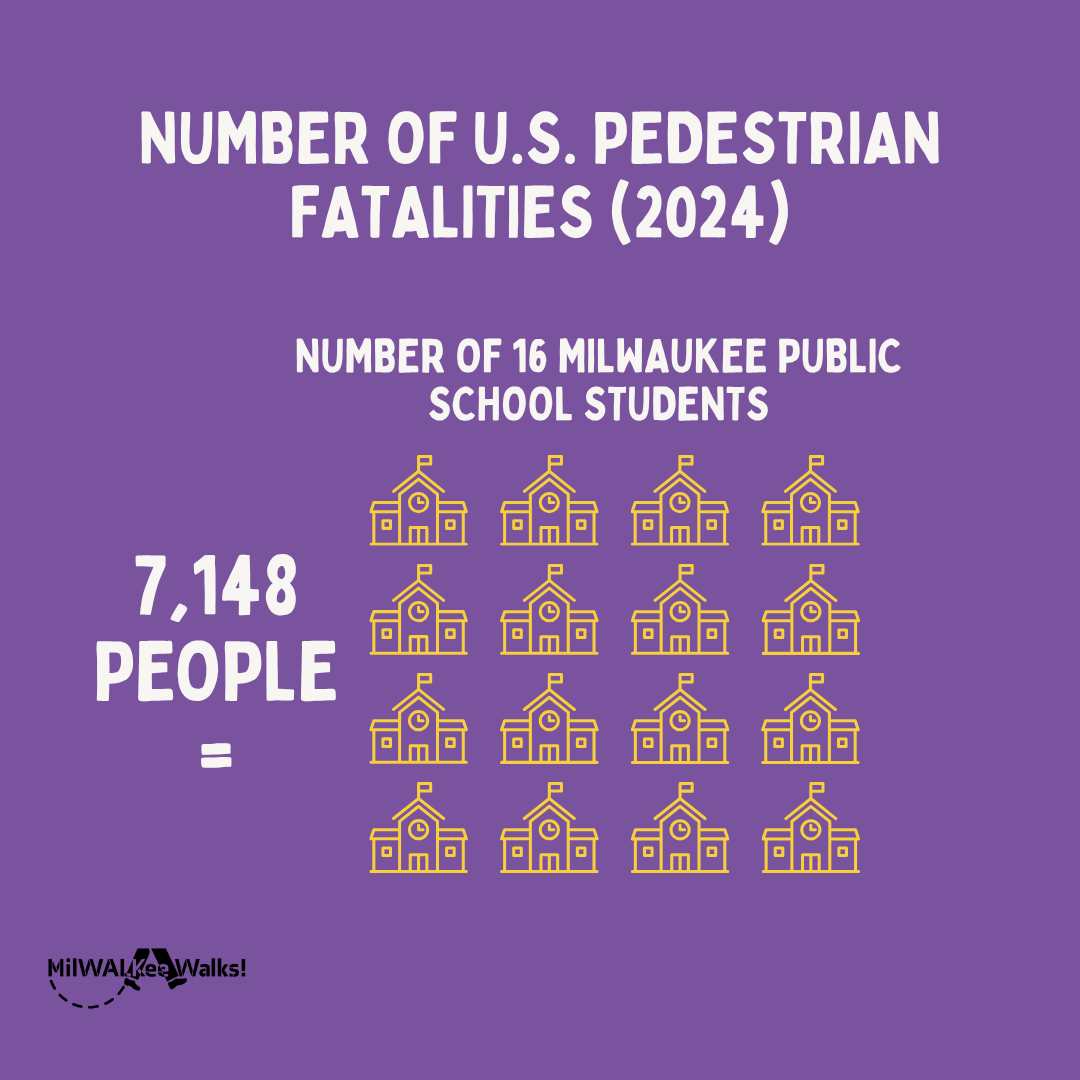On July 10, the Governors Highway Safety Association (GHSA) reported national-level traffic statistics for 2024. The report conveys both the hope and challenges of safe streets in the United States. GHSA states that 2024 saw a decline in pedestrian fatalities for a second year. Yet their most recent reports found that 7,148 pedestrians lost their lives in 2024. The 4.3% decrease in 2024 pedestrian deaths must be viewed in the context of the rapid 75% increase in deaths from 2010 to 2022 (Dangerous by Design). Even one pedestrian fatality is too many, and GHSA’s report reaffirms the importance of pedestrian safety advocacy in our community.

GHSA highlights the strong correlation between the fatality risk and vehicle size, in addition to alcohol use, streets without sidewalks, and driving after dark. In 2023, passenger cars accounted for 37% of pedestrian deaths, while light trucks, including SUVs, pickups, and vans, accounted for 54% (GHSA). As Milwaukee County’s pedestrian fatalities in 2024 indicate (MilWALKee), the increase in wider, taller, longer, and heavier cars over the past 30 years has led to the larger size of vehicles impacting pedestrian fatalities. This change of vehicle size has resulted in a higher risk of damaging vital organs, leading to a lower chance of surviving after car crashes.
In addition to the size of vehicles, survival probability depends on whether drivers reported their crashes immediately. As GHSA reports, 1 in 4 pedestrian deaths were hit-and-runs. Pedestrian fatalities are strongly impacted by drivers’ actions after the crash. In Milwaukee County, 57% of pedestrian crashes were hit-and-run, compared to 25% nationally, and the hit-and-run culture has greatly contributed to the increase in pedestrian deaths in our community.

In addition to a higher rate of hit-and-run crashes, Milwaukee also has a higher fatality risk for its racially marginalized population. As Dangerous by Design reports, disproportionate crash impacts are significant: the fatality rate of Black people is nationally more than twice the rate of white people, and the fatality rate for Indigenous people is more than 4 times the rate of white people. In Milwaukee County, this racial injustice is even more pronounced: while Black people in the U.S. are at 2.1 times more at risk than white populations, Black Milwaukee pedestrian fatalities are at 2.4 times more than white Milwaukeeans (2023 report). Black Milwaukeeans (38.1%) make up a larger share of the total population than white non-Hispanic residents (32.2%), but they remain more vulnerable to traffic violence. Therefore, safe streets, especially in Milwaukee, are not possible without tackling racial injustice.

With both forward-looking and critical statistical perspectives from GHSA, we may agree that there is enormous work left to our community. Given the impact of vehicle size, hit-and-run crashes, and racial inequities, safe streets efforts in Milwaukee County need to be dedicated not only to the individual drivers’ responsibilities and urban roadway designs, but perhaps more importantly, the traffic safety culture.
You can be a part of improving this culture! MilWALKee Walks hosts Crosswalk Actions, street painting (“Paint the Pavement”), tabling at neighborhood parks, and other events, all designed to address this cultural component to ending traffic violence. All are invited and welcome to join us (schedule here). You can also contribute to the safety by submitting this online service request to the City of Milwaukee, including broken traffic signals or potholes in your neighborhood. Everyone is a pedestrian, as drivers also get out of their cars at some point; therefore, a reminder to the driver also means everyone’s safety as pedestrians.
